(Last updated on 24/03/2025)
Olivenza is a town (with city status) located in the namesake area of Badajoz province. A centuries-long history as a Portuguese city is still present in its military, religious and civil architecture. Olivenza makes for a great day trip from Badajoz or Mérida and is also a good place to stay overnight if driving to Spain from Lisbon.
This destination mini-guide covers what you need to know before visiting Olivenza – from what to see and do to practical info and tips on things like how to get there, where to park or where to stay.
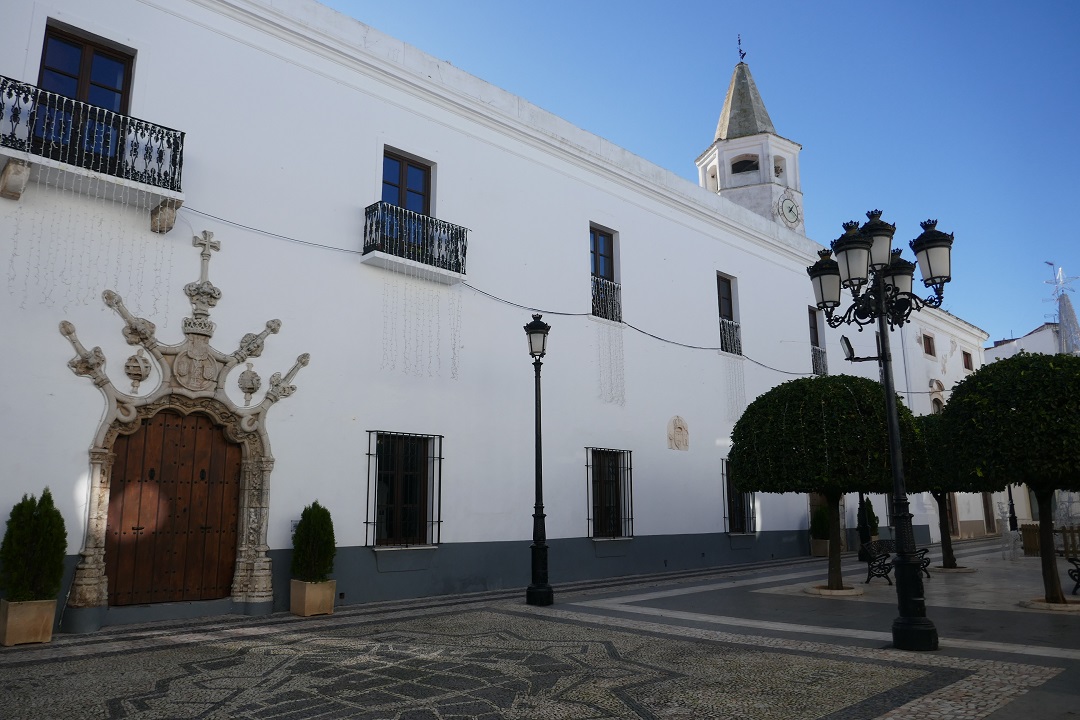
This post contains affiliate links. If you click through and make a purchase, it will generate a small commission for me, at no extra cost for you. Read the full disclosure for more details.
Table of contents
- 1 Five historical facts about Olivenza:
- 2 How to get to Olivenza
- 3 What to see in Olivenza
- 4 What to do in Olivenza
- 5 Things to see and do near Olivenza
- 6 Map of Olivenza
Five historical facts about Olivenza:
1. As a border town, Olivenza’s history is marked by repeated conflicts. In 1297, Portuguese king D. Dinis signed the Alcañices Treaty whereby the then Castilian town was transferred to Portugal in exchange for his promise not to support the enemy of Queen of Castille María de Molina during the civil war between Castille and Leon.
2. Between 1297 and 1801, Olivenza remained under Portuguese sovereignty except for several war periods in the sixteenth and seventeenth centuries.
3. In 1801, during the so-called War of the Oranges, Spanish troops (bolstered by French troops) invaded Portugal and took Olivenza. The Treaty of Badajoz formally transferred Olivenza back to Spain.
4. Portugal has not officially recognised the border established by the Treaty of Badajoz (considering it void) but has not claimed Olivenza back either. Olivenza remains a sort of old historical dormant claim.
5. The position of Spain is that Olivenza is a legitimate Spanish possession under the Treaty of Badajoz, which is still in force, and there is no legal ground obliging Spain to return Olivenza to Portugal.
How to get to Olivenza
You can get to Olivenza either by coach or by car.
Getting to Olivenza by coach
Company Interbus serves Olivenza from Badajoz with nine daily services from Monday to Friday and two services on Saturdays. The same line serves Olivenza from small places such as nearby Alconchel and Villanueva del Fresno. For timetables and prices, check Interbus’ website. Tickets must be purchased on the coach.
Coach journey duration to Olivenza:
From Badajoz: from 25min to 35 min, depending on the service.
From Alconchel: from 5min to 20min, depending on the service.
From Villanueva del Fresno: from 45min to 55min, depending on the service.
Olivenza Bus Station is located in Calle Avelino Palma Brioa, with the three main squares (Plaza de España, Plaza de la Constitución and Plaza Santa María) all under 6 minutes away on foot.
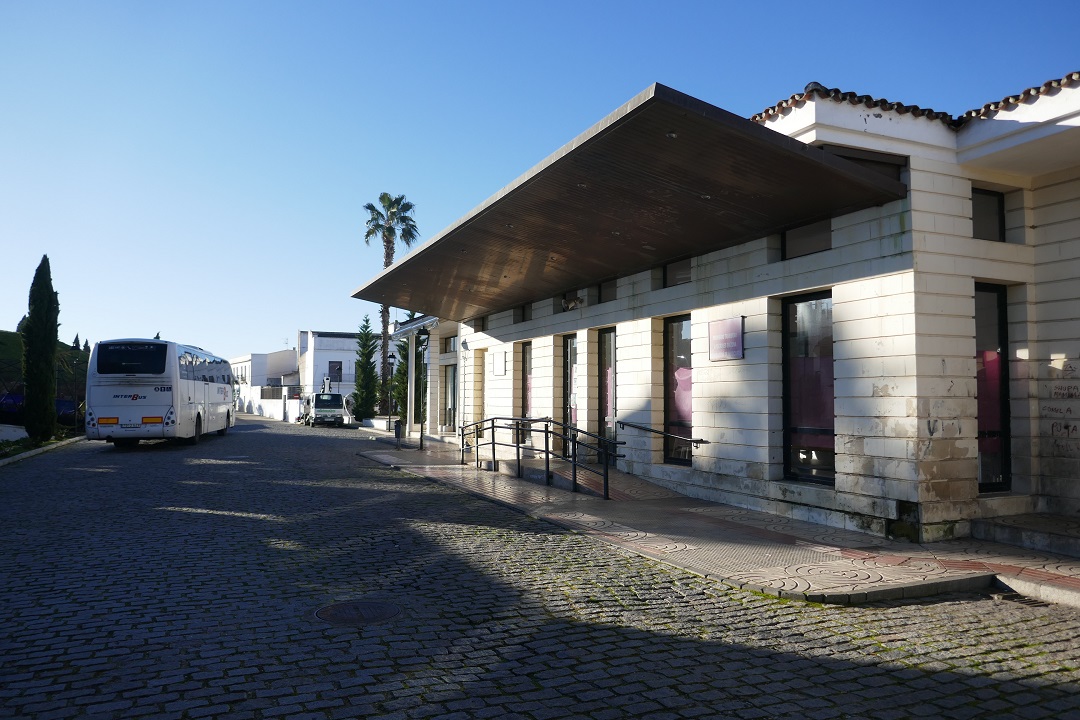
Recommended read: A guide to travelling Extremadura by coach
Getting to Olivenza by car
If you come from the north or the east, your main point of reference for reaching Olivenza would be Badajoz. For example, Mérida-Badajoz on the A-5/E-90 road and then Badajoz-Olivenza on the EX-107 road; or Cáceres-Badajoz on the N-523 road and then Badajoz-Olivenza on the EX-107 road.
If you come from Seville, drive north on the A-66/E-803 road and get off at exit 684 towards Zafra. Continue on the N-432 road and then join the EX-105 to Olivenza.
If you come from Lisbon airport, take the A-12 motorway, then the A2 road and then join the A6 Spain-bound road. Get off the A6 road at exit 9 (Elvas oeste) onto the N4 road towards Elvas. Keep driving on the N4 road following the Espanha (Spain) signs and at this roundabout, take the first exit towards Olivença (Olivenza). This last road (unnamed in Portugal) becomes the EX-105 once in Spain.
Typical car journey duration to Olivenza:
From Badajoz: 35min
From Mérida: 1h 15min
From Cáceres: 1h 45min
From Seville: 2h 30min
From Lisbon airport: 2h 30min
Parking in Olivenza: there’s free on-site parking at the Recinto Ferial (also right across the street, outside the city wall bastion) or in Calle Avelino Palma Brioa, opposite the bus station.
What to see in Olivenza
Castillo de Olivenza
Built in the fourteenth century, with numerous defensive elements (barbican, moat) added later on, Castillo de Olivenza is a good example of military architecture and a great place to start exploring the town. The fortress comprises a bailey and four towers, including the mighty 37-metre-high keep, which offers fantastic panoramic views over Olivenza and the surroundings.
Inside the keep there are three rooms at different levels, the prettiest being (in my opinion) a ribbed vaulted one located in the uppermost level. Some really high and uneven steps lead out onto a wall walk connecting the towers. Apart from those stairs, the three rooms in the keep and the terrace at the top are accessed via ramps only (17 in total).
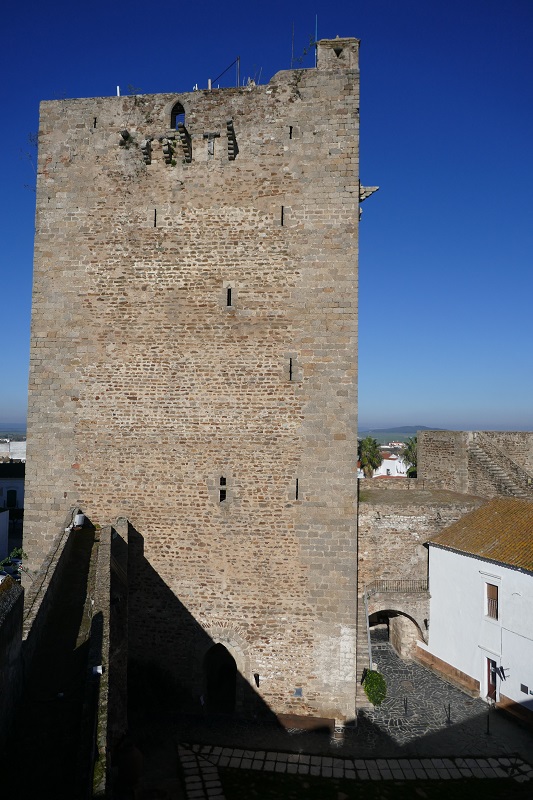
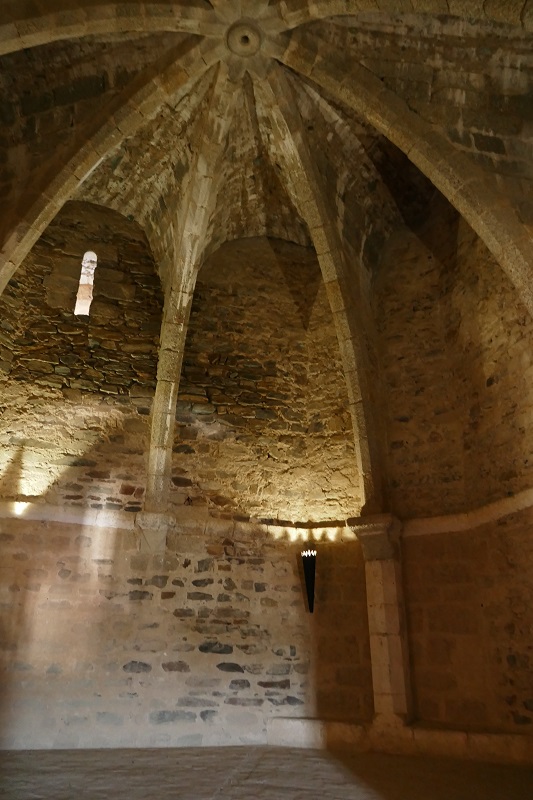
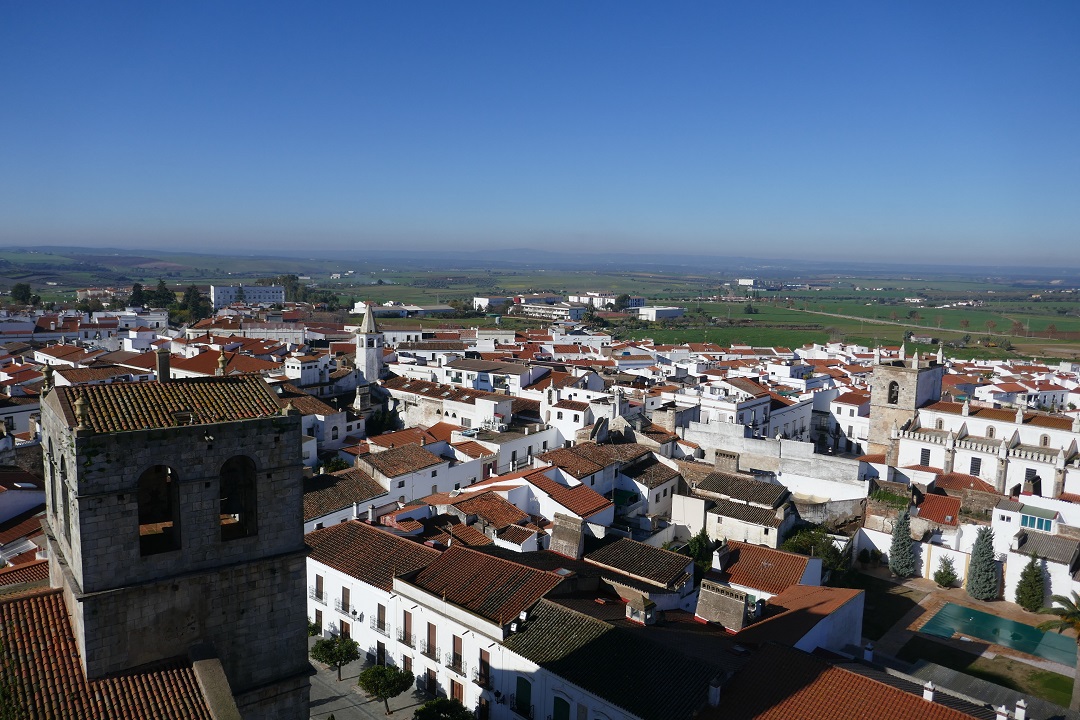
Don’t miss: the balcony off the terrace at the top of the keep, overlooking the square.
Location: Plaza Santa María
Museo Etnográfico González Santana
This interesting museum occupies an eighteenth-century former bakery (Panadería del Rey) adjoining the fortress and is accessed from the bailey. Its four cylindrical bakery chimneys can still be seen from the castle wall walk.
The collection is displayed over two floors and features a number of spaces such as a cellar, a barber shop, blacksmith’s shop, a classroom, a corner shop and a tailor shop. It also contains curious collections of agricultural tools, ceramics, toys, clothes, medical equipment and musical instruments. In the religious art room, don’t miss the model of the fortress and the city walls.
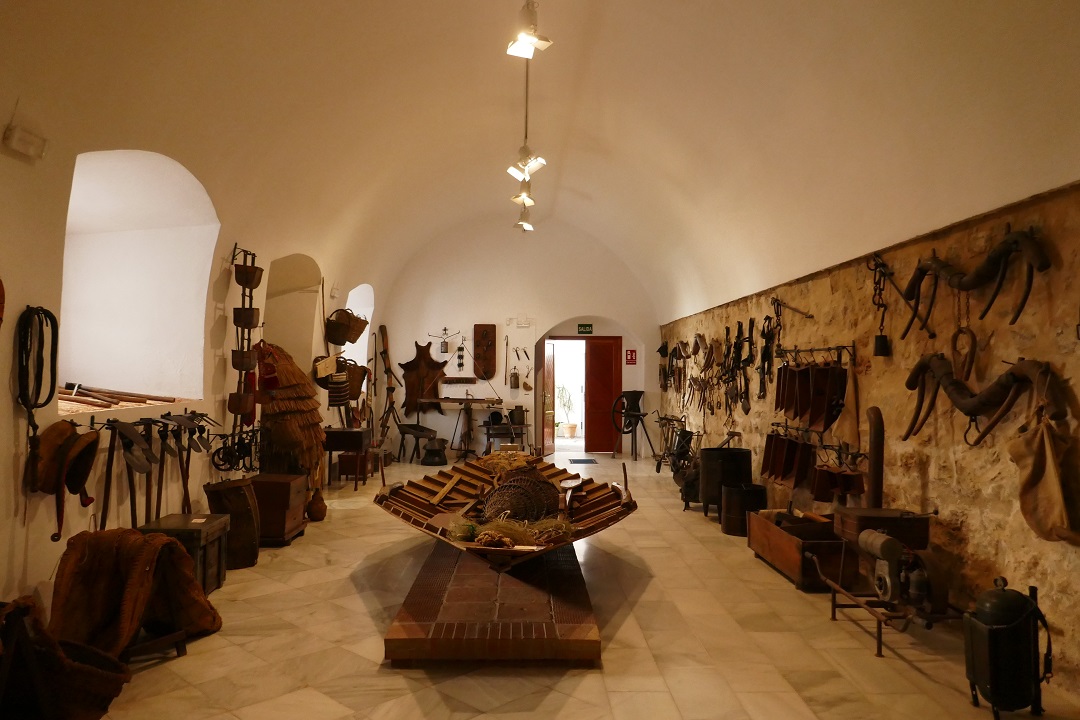
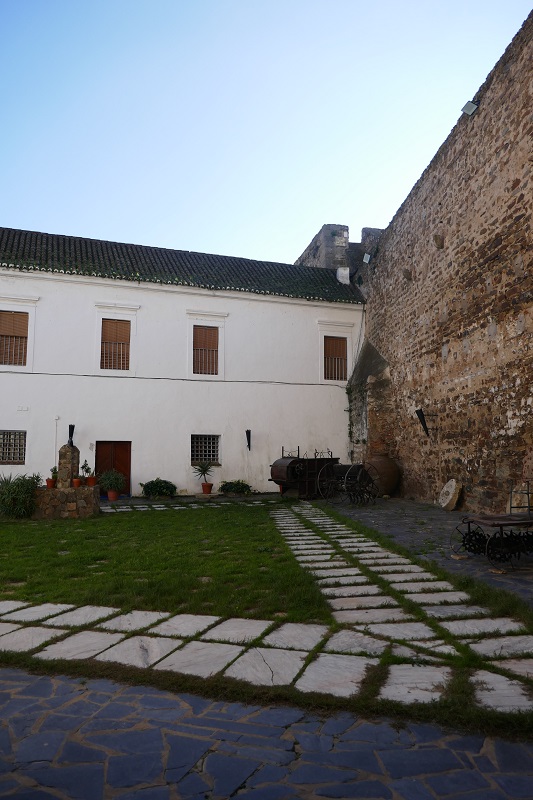
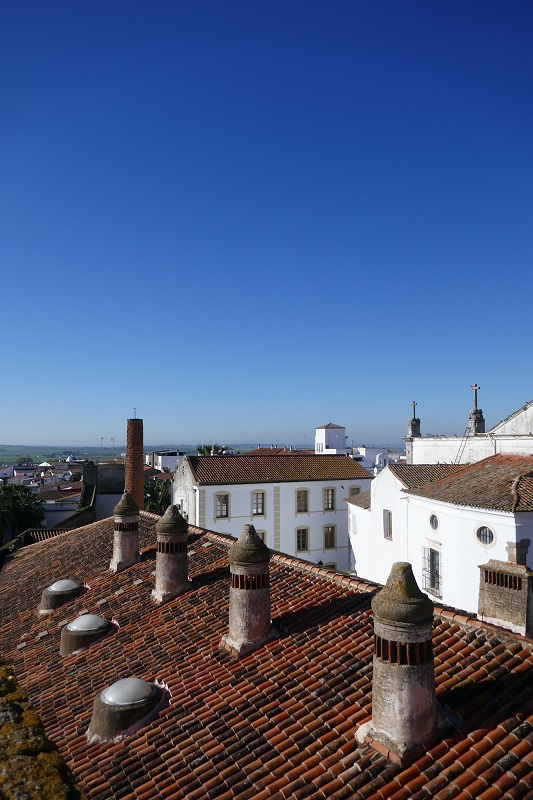
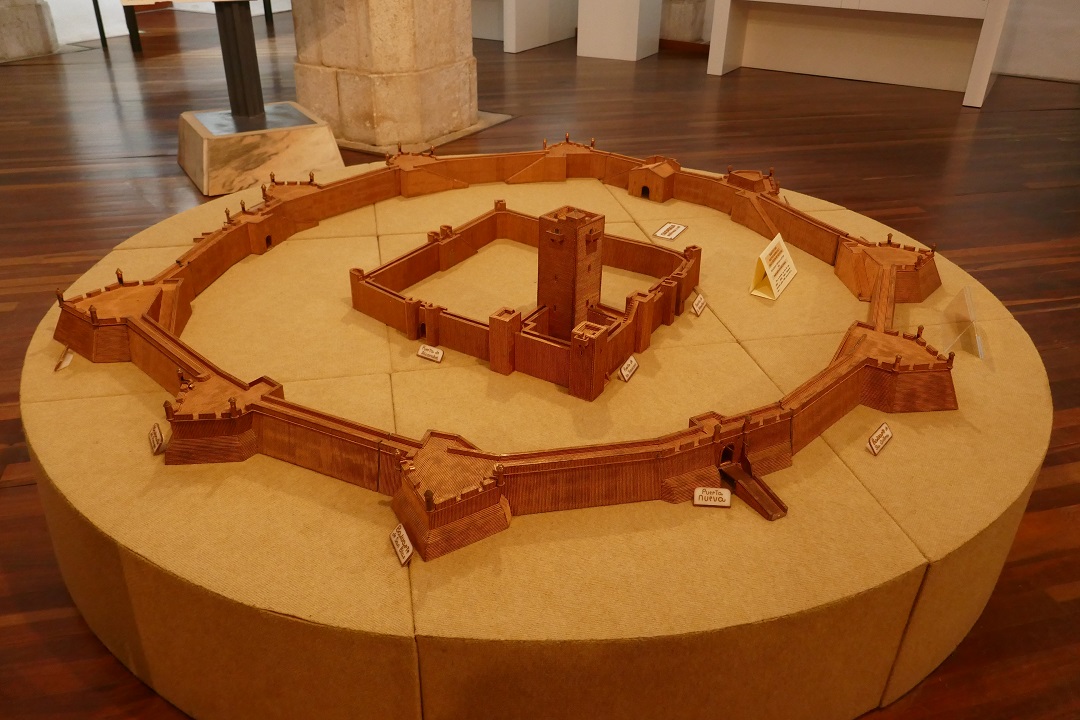
I particularly liked: old pictures of musicians and local people dancing at a party (in the music room), gunpowder bottles from London (in the agricultural tools room) and a 1912 letter from a New York hydraulic press manufacturing company about the potential sale of an olive press (in the olive mill room).
Location: Plaza Santa María (inside the fortress)
Opening times: (from 1 October to 30 April) from Tuesday to Friday from 10.30am to 2pm and from 4pm to 7pm, Saturdays from 10am to 2.15pm and from 4pm to 7pm, and Sundays from 10am to 2.15pm; (from 1 May to 30 September): from Tuesday to Friday from 10.30am to 2pm and from 5pm to 8pm, Saturdays from 10am to 2.15pm and from 5pm to 8pm, Sundays from 10am to 2.15pm.
The museum is closed on Mondays and on the following dates: (closed all day) 1 January, 6 January, 1 May, 15 May, 24 December and 25 December; (closed in the afternoon) 5 January, Carnival Saturday (date changes), 8 September and 31 December.
Entry fee: the general entry fee to the museum (and castle) is €2.50. Reduced fees available. Children under thirteen go free.
Tickets: to be purchased at the museum. Cash-only payments.
Contact information: (phone) (+34) 924 49 02 22; (email) [email protected]; (website, in Spanish): https://museodeolivenza.com/
Medieval walls and gates
The medieval walls form a square which originally had fourteen towers and a gate on each of its four sides. Only two of the original four gates remain in good condition: Puerta de Alconchel and Puerta de Los Ángeles, both flanked by semicircular towers. From the original Puerta de La Gracia only the arch remains, while Puerta de San Sebastián has been rebuilt.
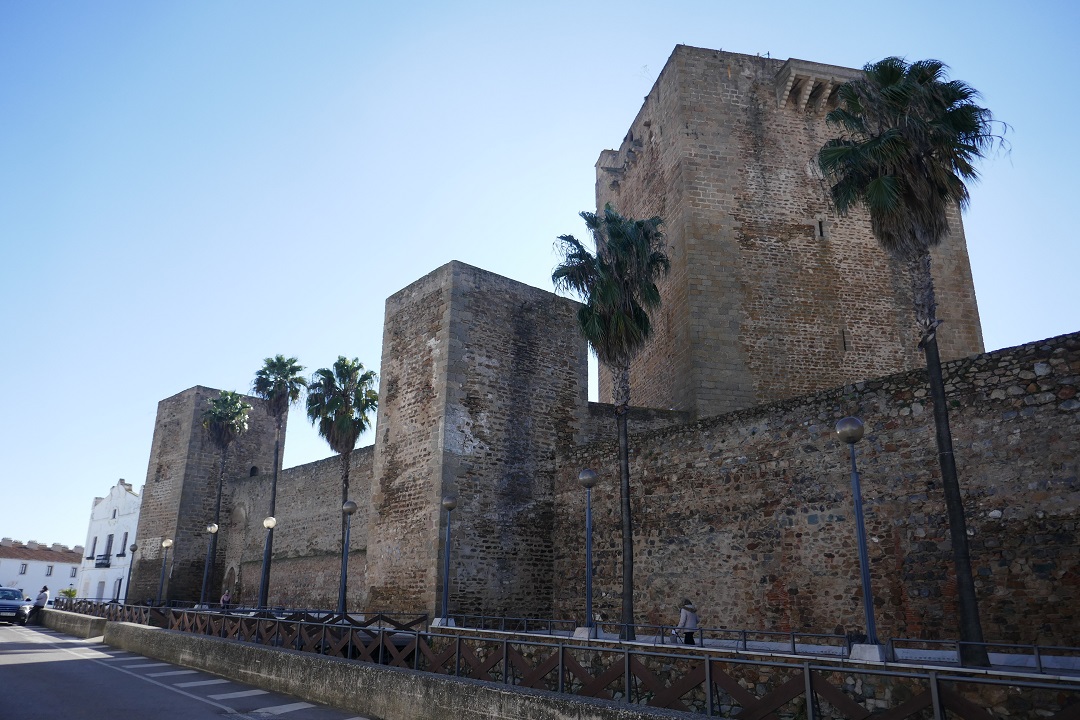
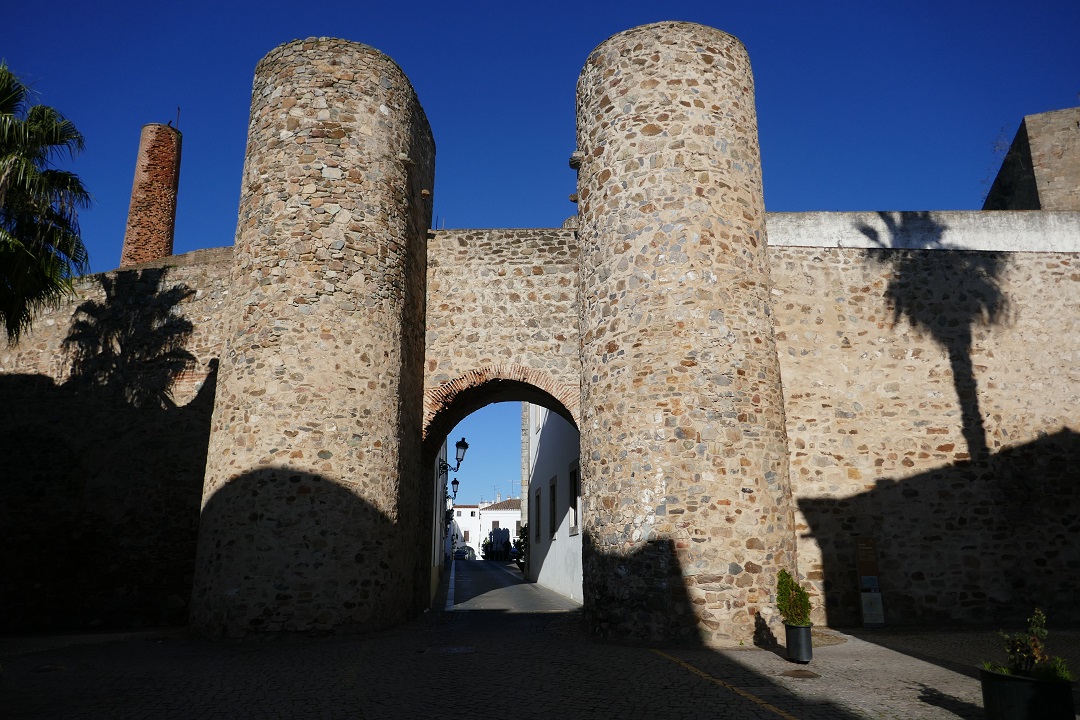
Location: Puerta de Alconchel is at the corner of Calle Duque de Cadaval and Plaza Ignacio Frade; Puerta de Los Ángeles is at the corner of Calle Caridad and Calle Francisco Ortiz; Puerta de La Gracia is at the corner of Calle Duque de Cadaval and Plaza de la Constitución; and Puerta de San Sebastián is at the corner of Plaza de Santa María and Calle Lope de Vega.
City wall bastions
The city walls were built in the seventeenth century at a time of recurrent conflicts between Portugal and Spain. Most of its original nine bastions have been preserved, but some of them have been renovated and repurposed – Baluarte de la Cortadura now holds a bullring, while Bastión del Príncipe holds an outdoor auditorium (which you can see from the terrace atop the castle keep). The local Tourist Information Centre (Oficina de Turismo) is also located in a bastion (Baluarte de San Juan de Dios).
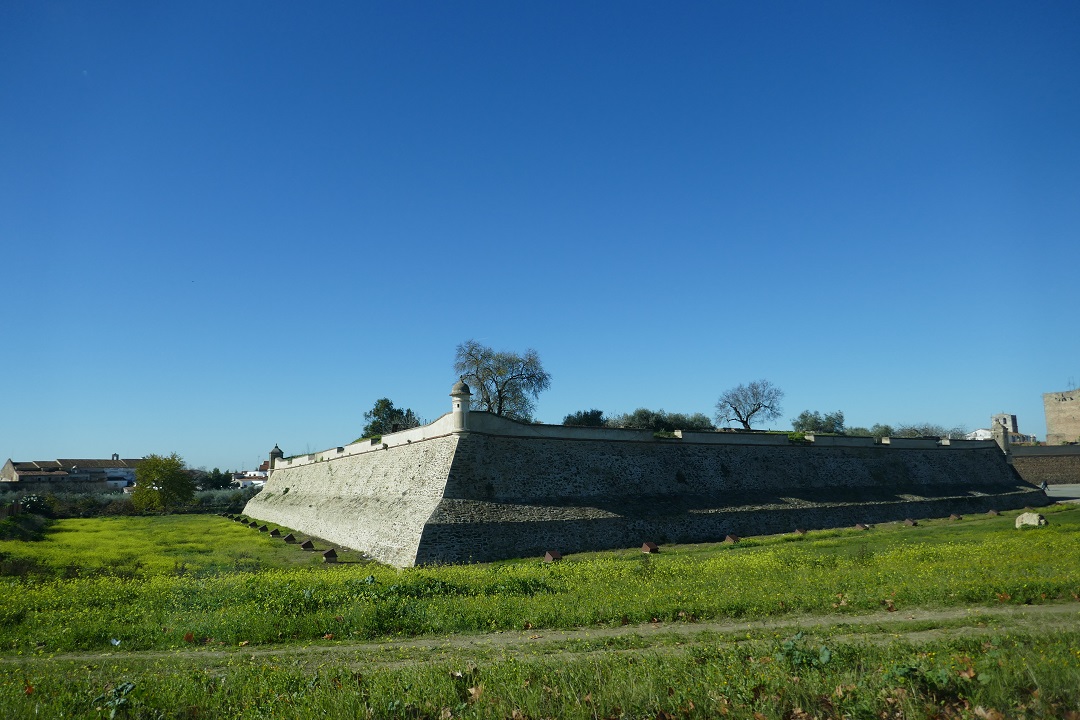
Location: Bastión del Príncipe can be seen from Calle Marqués de Vauban/Avenida Badajoz; Baluarte de San Blas can be seen from Avenida Villanueva; Baluarte de Santa Quiteria can be seen from Calle Muralla.
Paseo de Hernán Cortés
In Paseo de Hernán Cortés there’s a rather lovely little square with a fountain which is surrounded by several notable buildings:
Cuartel de Caballería: a large white two-storey building built in the eighteenth century as a cavalry regiment barracks. Today, it’s home to a local community and adult education centre (Universidad Popular).
Antigua Cámara Agraria: a (not originally) porticoed building adjoining the flanking tower of the castle, formerly home to a chamber of agriculture. It leads to a small square (Plaza de San Ignacio) adjoining the medieval wall and palm tree-lined on one side. I particularly like the pretty wooden panelled balcony doors and windows.
Antiguo edificio de Renfe: the former office of Spain’s national state-owned railway company (Renfe), now the offices of Concentrix. Look for the ‘Renfe’ sign still engraved over the main door.
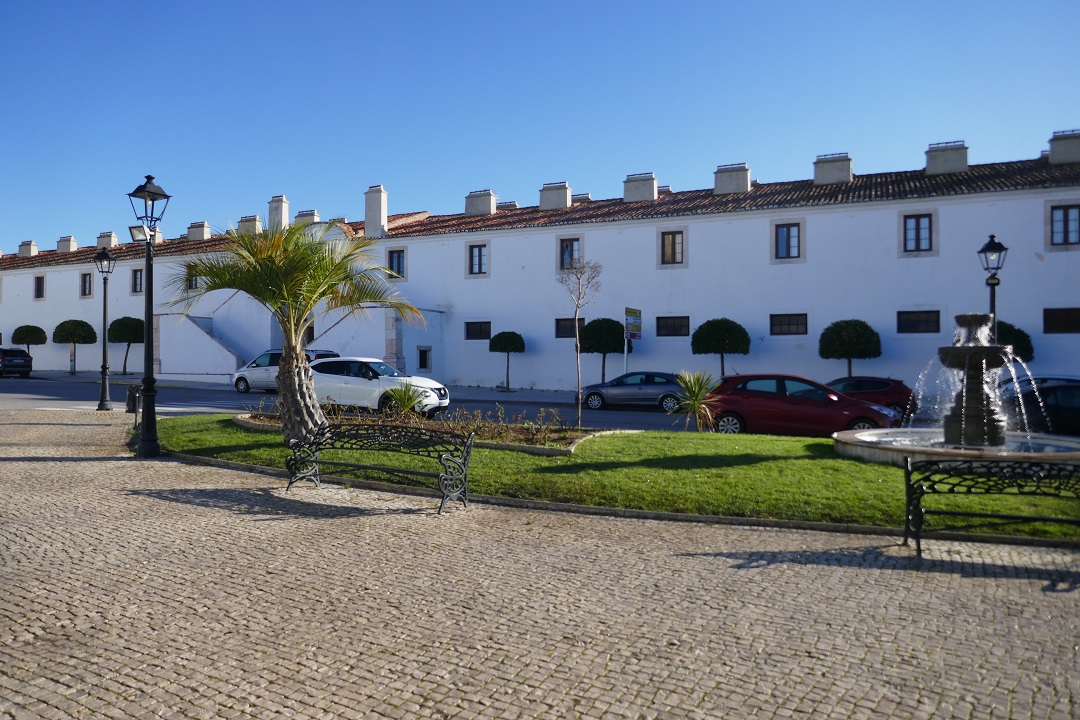
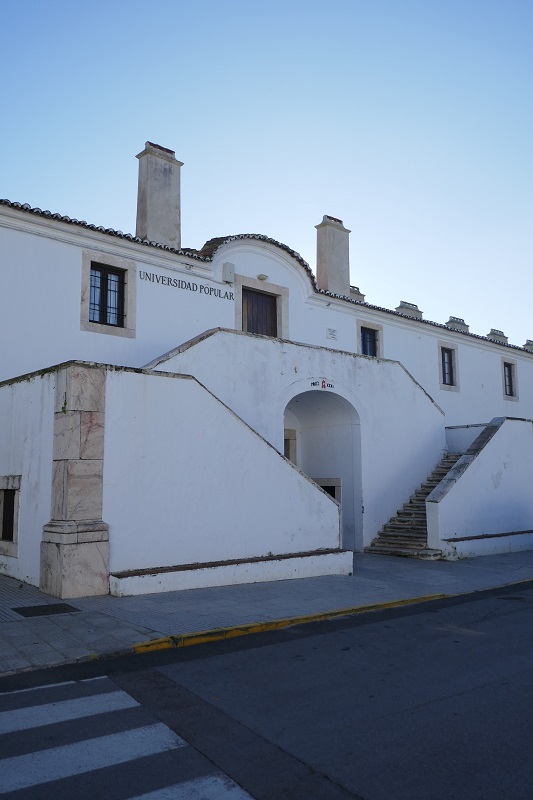
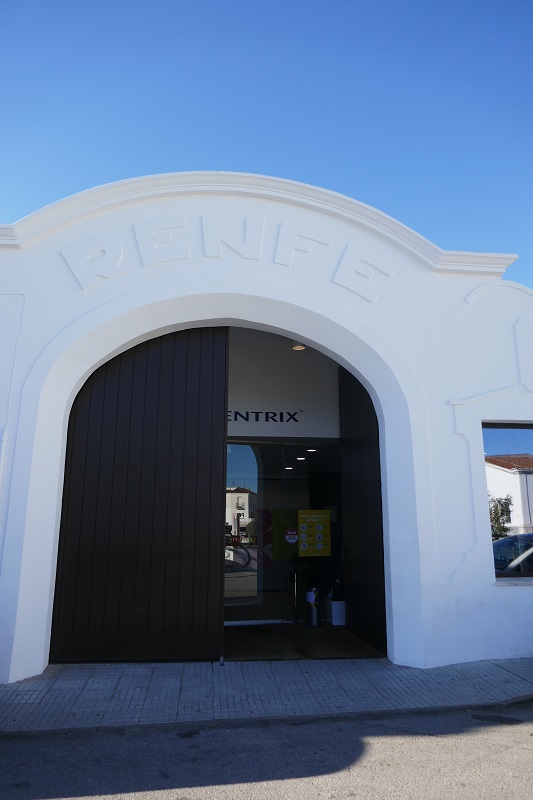
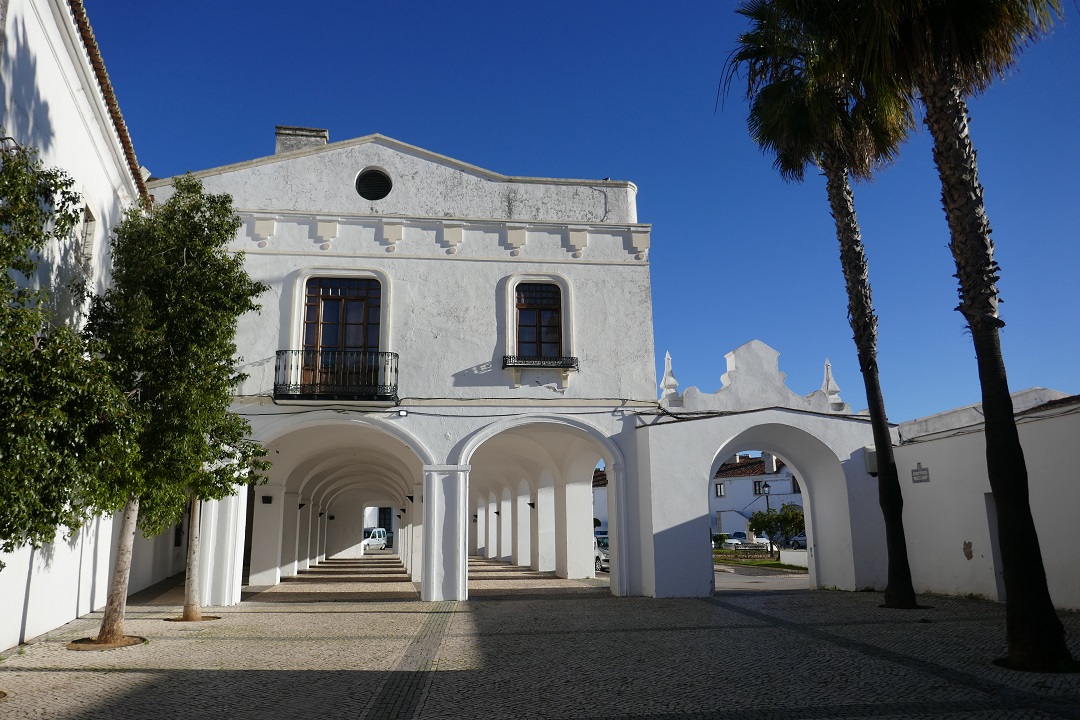
Location: Paseo de Hernán Cortés
Palacio Municipal
Olivenza town hall (Palacio Municipal) is located right next to one of the medieval wall gates (Puerta de La Gracia). Its beautiful, richly ornate Manueline-style portal has become the city’s most recognisable symbol; it depicts plants, armillar spheres, elements representing overseas conquests by the Portuguese, and a tower and an olive tree (Olivenza’s coat of arms), amongst other things. The hexagonal clock tower, located to the right of the main door, is another highlight.
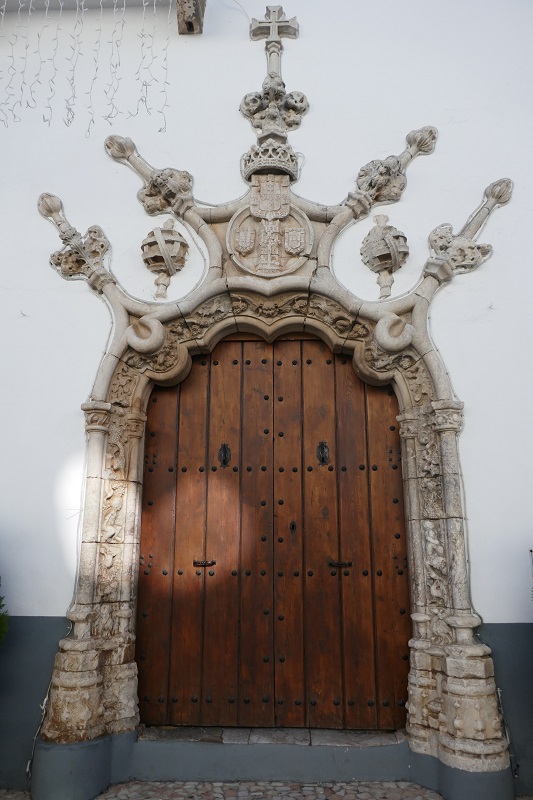
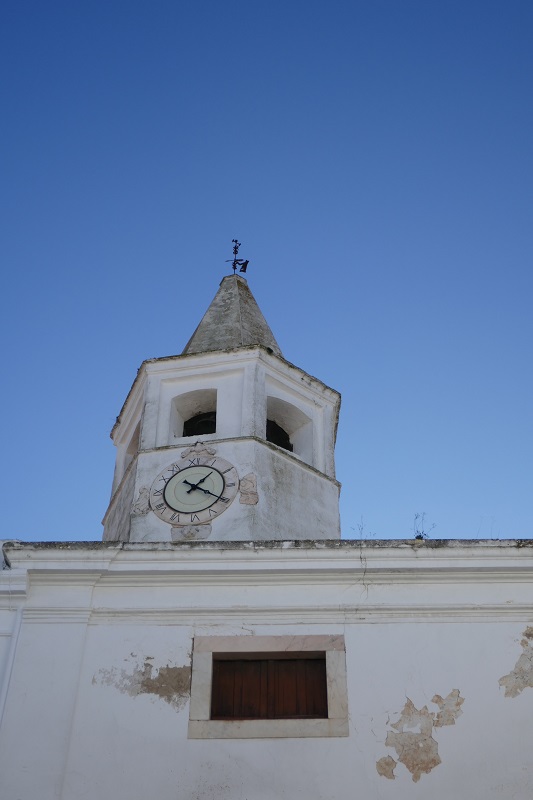
Location: Plaza de la Constitución
Casa Modernista
You’ll find Olivenza’s only Modernist house in a centrally-located narrow street in what used to be the Jewish quarter. Take a moment to look up and contemplate the pretty elements decorating its façade and balconies.
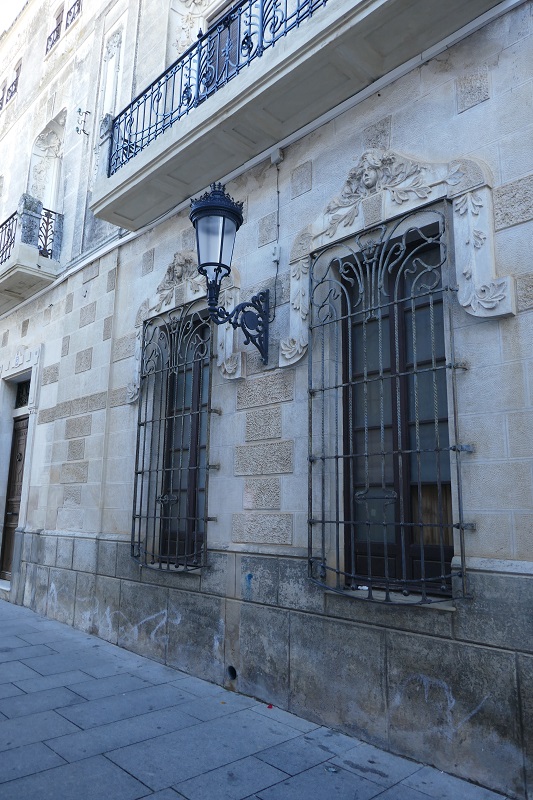
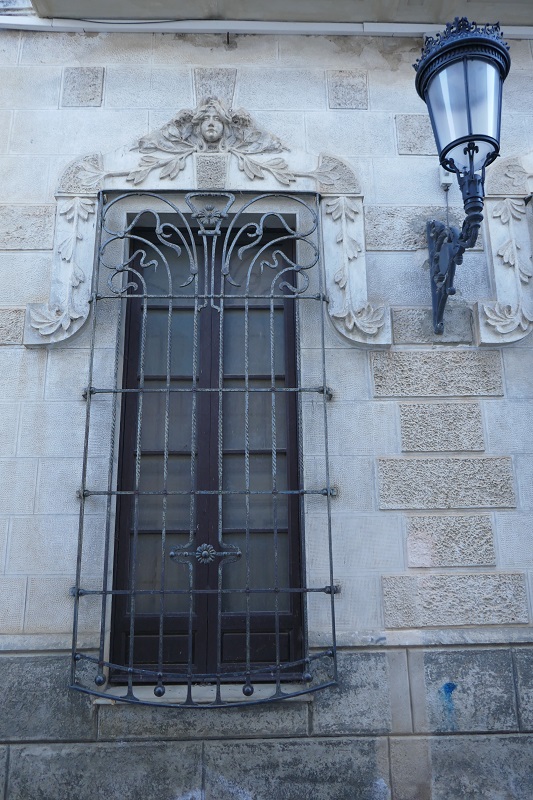
Location: Calle José Moreno Nieto, número 5
Iglesia de Santa María del Castillo
Located in a central square next to the castle and the ethnographic museum, this seventeenth-century church was built in a Portuguese late Renaissance style. Inside, the restrained simplicity of its whitewashed naves and round arches contrasts with later bolder decorative additions such as tiled murals and a golden altarpiece. Outside, look for the colourful rose window above the door, the ceramic decorations crowning the upper corners of the bell tower, and the little altar surrounded by blue-tiled panelling located in the annex to the right of the main door.
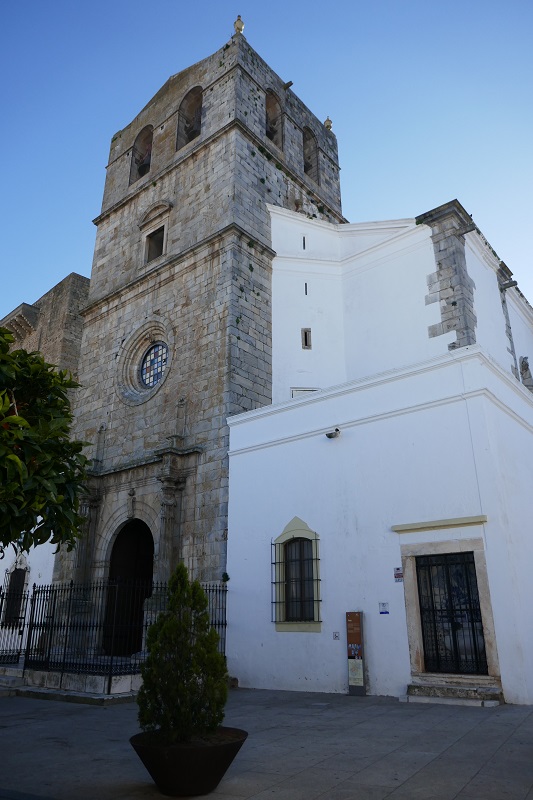
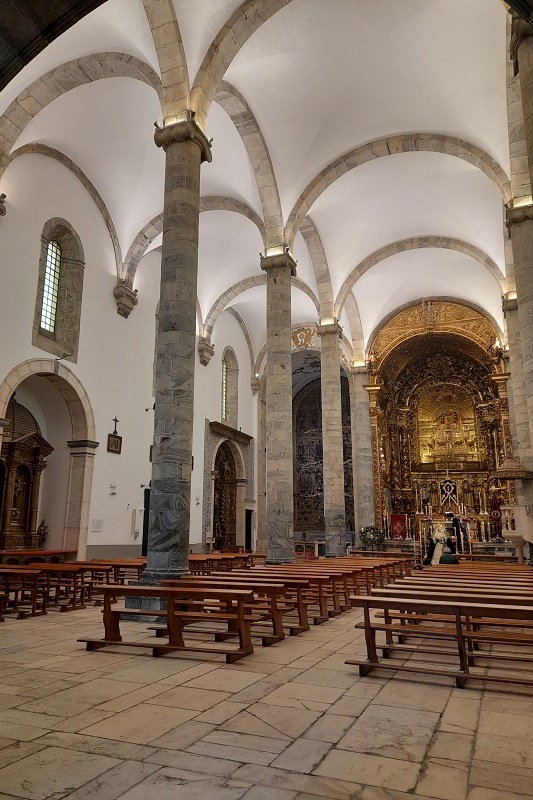
Location: Plaza de Santa María
Opening times: (from 1 May to 30 September) from Tuesday to Saturday from 10am to 1.30pm and from 5pm to 7pm; (in winter) from Tuesday to Sunday from 10am to 1.30pm and from 4pm to 6pm.
Iglesia de Santa María Magdalena
The construction of this sixteenth-century church was funded by a newly-introduced tax on the sale of salted fish, meat and oil. Built in the lavish Portuguese late gothic style known as Manueline, this church features a profusely decorated interior featuring naval elements. Unfortunately, it was closed when I visited Olivenza and all I could admire was the exterior.
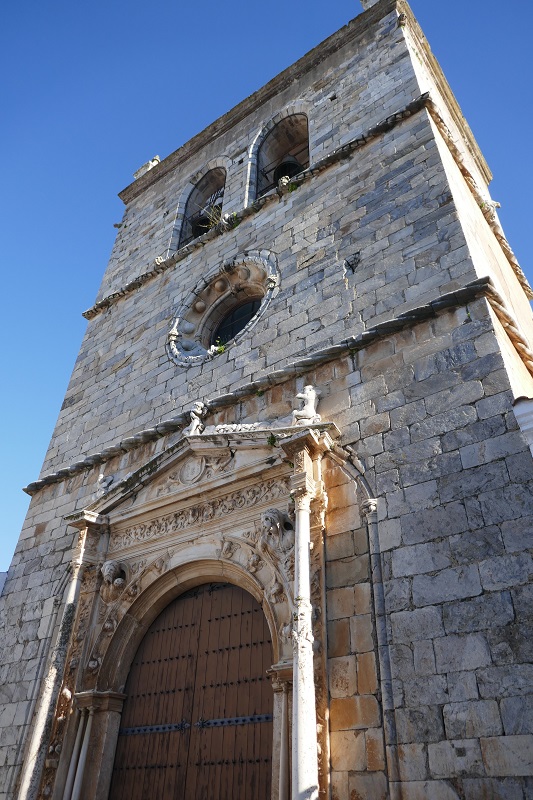
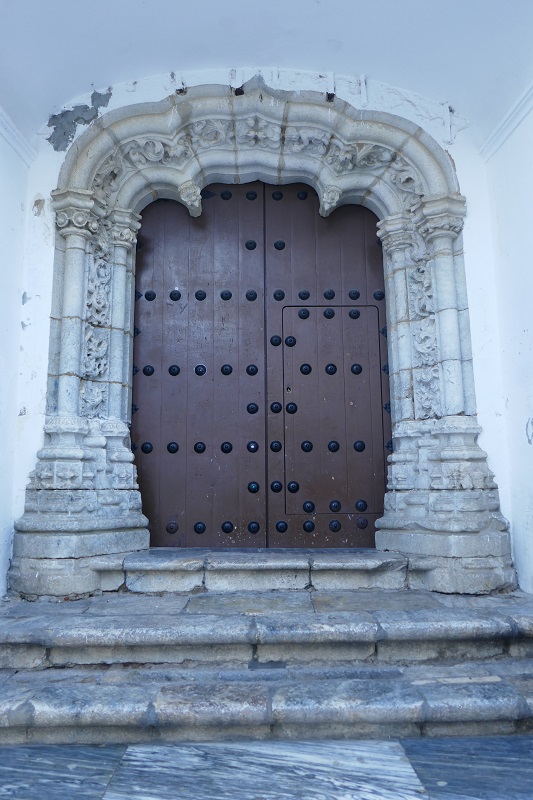
Location: Plazuela de la Magdalena
Opening times: (from 1 May to 30 September) from Tuesday to Saturday from 10am to 1.30pm and from 5pm to 7pm; (in winter) from Tuesday to Sunday from 10am to 1.30pm and from 4pm to 6pm.
Paseo Grande and Paseo Chico
These two palm tree-lined promenades are good places for a nice evening stroll, also serving as outdoor seating for nearby bars and cafés. In winter, the largest of the two (Paseo Grande) holds a sort of Christmas fairground – it was full of children attractions when I visited. Both paseos are separated by a mini-roundabout, yet visually linked via a stone-tiled path depicting the portal at the Palacio Municipal. I particularly like the cute kiosks with green doors, and tile and ceramic decorations situated at each corner of the central area between promenades.
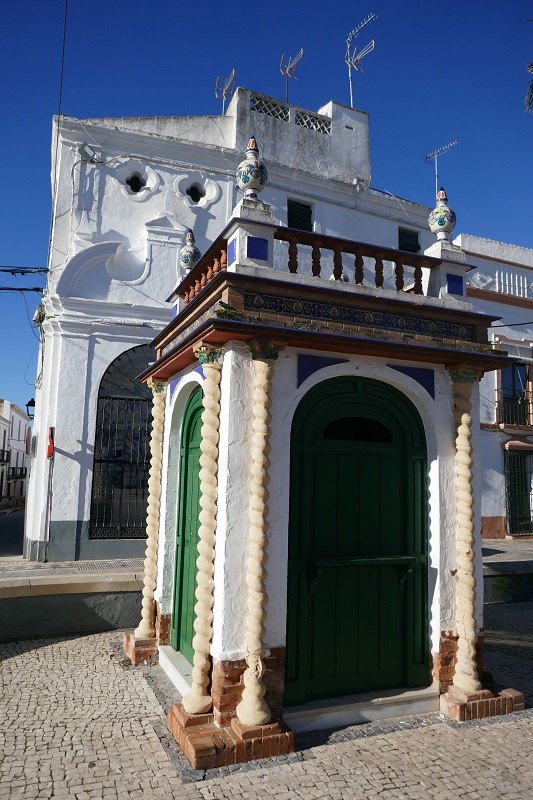
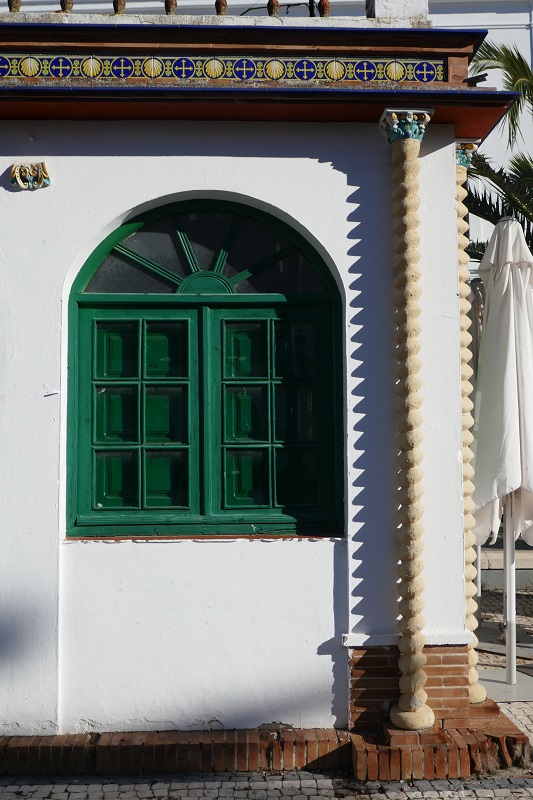
Location: Paseo Grande is located in Plaza de España; Paseo Chico is located in Avenida de Portugal.
Tourist Information Centre (Oficina de Turismo)
Location: Plaza de San Juan de Dios, s/n
Opening times: from Tuesday to Saturday from 10am to 1.30pm and from 4pm to 6pm, Sundays from 10am to 1.30pm. Closed on Mondays.
Contact details: (phone) +34 924 49 01 51; (email) [email protected]. Contact them ahead of your trip to Olivenza to confirm if there are any changes to the opening times of the sights above or you have any questions.
What to do in Olivenza
Look for Portuguese-style tiles
Tiles are a classic Portuguese decoration element and, as a former Portuguese city, Olivenza has lots of them. You’ll find them everywhere – in churches and other buildings, but also in the altars (pasos) scattered around the centre (such as the one next to Santa María del Castillo church). As you walk around, pay special attention to the blue and white tiled street signs displaying both the current Spanish street names and their former Portuguese ones.
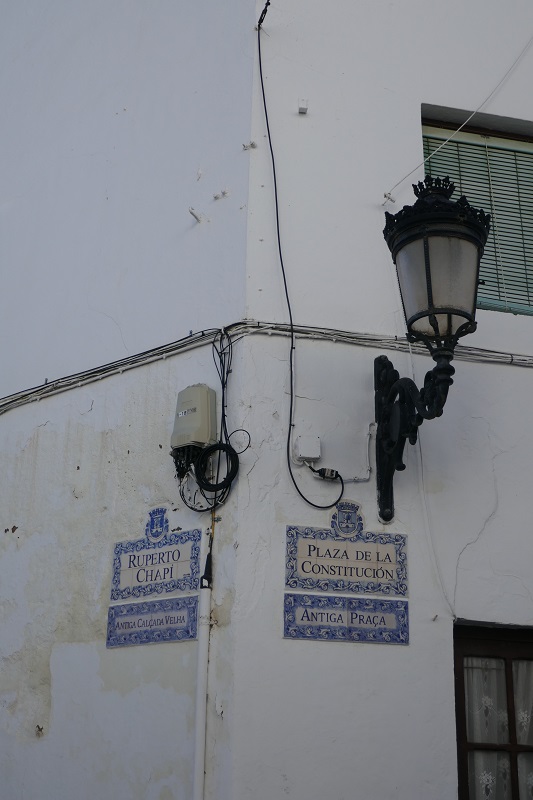
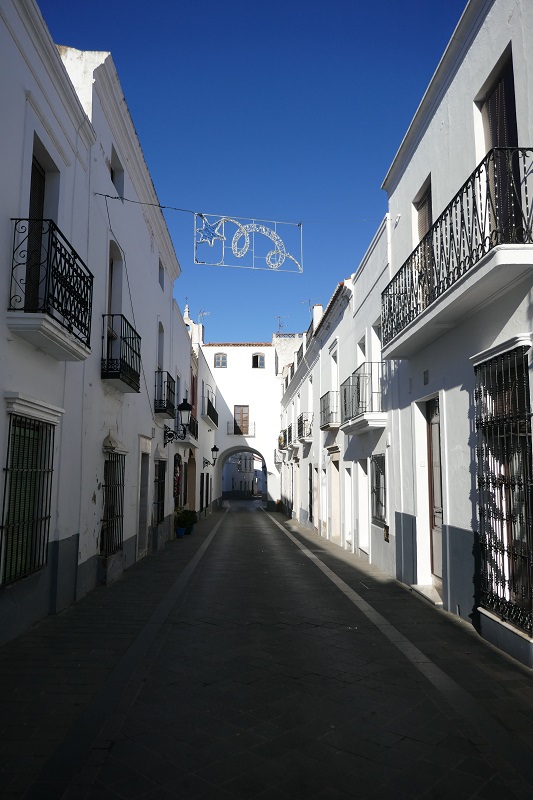
Try técula mécula
If there’s something about Olivenza that every extremeño knows is this: Olivenza is where técula mécula comes from. The recipe of this delicious tart with a proparoxytone name (of an unclear etymology but generally assumed to mean ‘for you and for me’) was found in a trunk by a local couple who would later open up the bakery. The ingredients are ground almonds, egg yolks, sugar, butter, lard, flour and water.
Sweet in flavour, this tart would be a great accompaniment to coffee or tea and, although dense in texture, it is surprisingly moist. I bought an individual portion and scoffed it on its own while sitting in the sun in Paseo Chico.
Técula mécula is a registered trademark by Casa Fuentes. You will find alternative versions in other places but, if you want to try the real deal, this is where you need to go (or to their other shop in Badajoz). Alternatively, you can order it online and get it delivered.
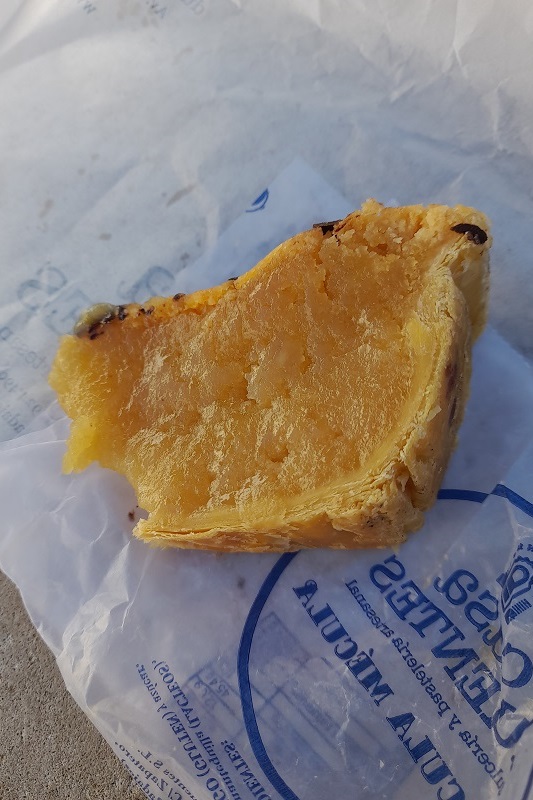
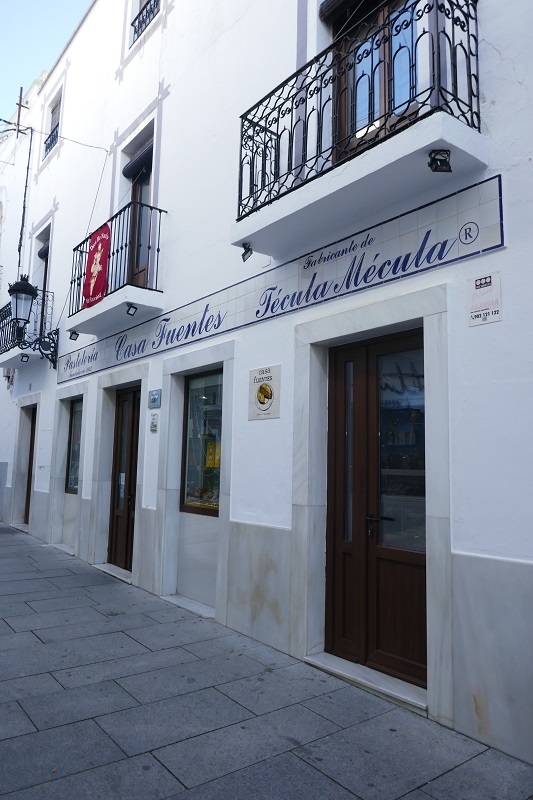
Contact details: (address) Casa Fuentes, Calle Moreno Nieto, 11, Olivenza; (phone) +34 924 490169; (website) https://pasteleriacasafuentes.es/
Things to see and do near Olivenza
Walk the Ruta Sierra de Alor
Ruta Sierra de Alor is a three-hour walking route starting outside the outlying village of San Jorge de Alor. I’ve completed part of this route in the month of December and the views at over 600m of the green surrounding areas are fantastic. This route is also great for a spring day out to see the rare wild peonies (paeonia broteri) in bloom.
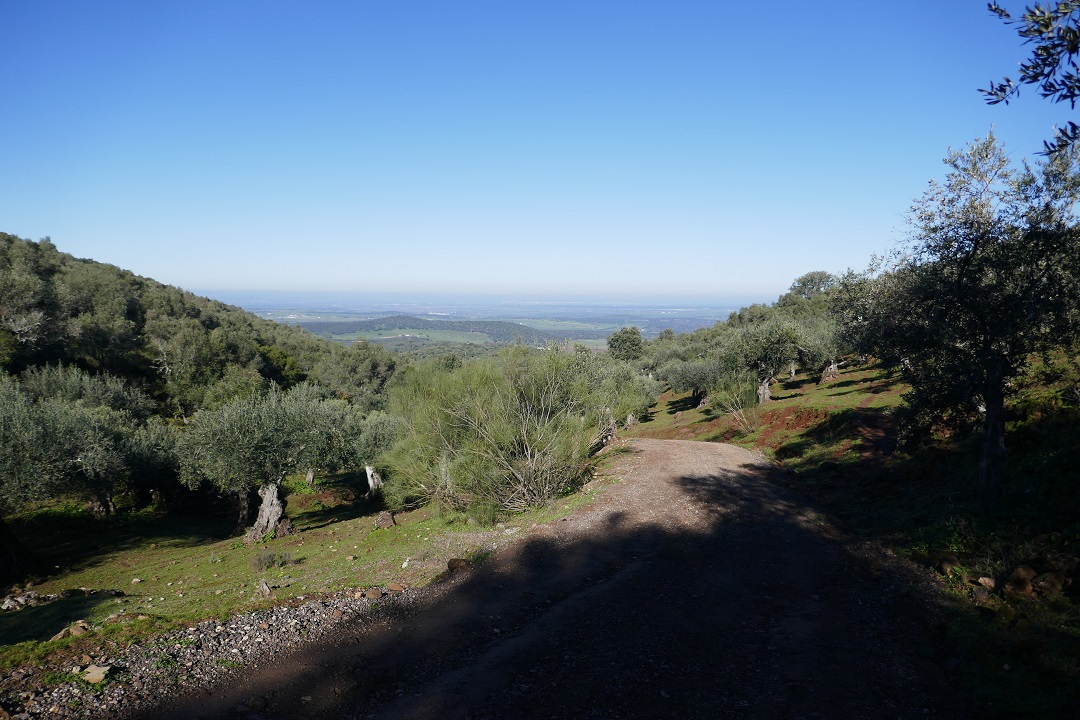
Where: San Jorge de Alor (6.2km from Olivenza)
Visit Castillo de Alconchel
Officially Castillo de Miraflores, this imposing twelfth-century castle is a 15-18-min drive from Olivenza. Open Tuesday to Sunday, with tickets available to buy online for only €1.50, it’s a no-brainer place to visit within the Olivenza area.
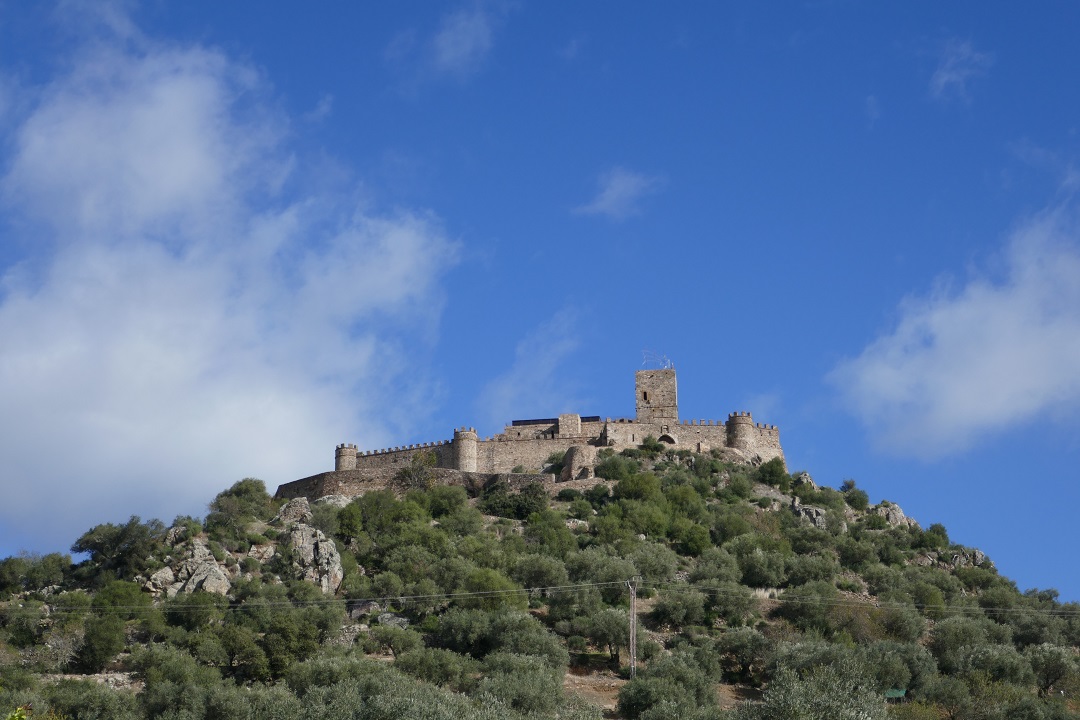
Where: Alconchel (20.3km from Olivenza)
Map of Olivenza
Find all the places mentioned in this article on the map below.
This content is protected by copyright and belongs exclusively to Irene Corchado Resmella. To know exactly what this means, read the 'Copyright' section in the Website terms of use.
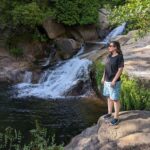
Irene Corchado Resmella
Hi! I’m Irene (/ee-REH-neh/). Long since settled in the UK, I explore my Spanish home region of Extremadura with an inquisitive mind, a sharp eye, and the duality that comes with being both a local and a visitor. Then I write about it here to help you discover this beautiful yet overlooked part of Spain. If you have any questions after reading this article, submit a comment below! Read more about me.
